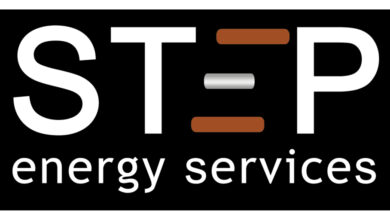Insights on the East Africa Cement Market to 2026 – Featuring Bamburi Cement, ARM Cement and Dangote Cement Among Others – ResearchAndMarkets.com

DUBLIN–(BUSINESS WIRE)–The “East Africa Cement Market: Industry Trends, Share, Size, Growth, Opportunity and Forecast 2021-2026” report has been added to ResearchAndMarkets.com’s offering.
The East Africa cement market reached a volume of US$ 4.55 Billion in 2020. Looking forward, the publisher expects the East Africa cement market to exhibit strong growth during the next five years.
Companies Mentioned
- Bamburi Cement Limited
- ARM Cement PLC
- East African Portland Cement PLC (EAPC)
- Dangote Cement Plc
- Mombasa Cement Limited
Cement is an economical, high-quality material that is widely utilized in the construction industry across the globe. It is a fine powder made by heating a ground mixture of clay and limestone at a high temperature. Cement is mixed with water and used as a binding material in the construction industry. It can be categorized into hydraulic and non-hydraulic, depending upon its ability to set under the presence of water.
Amongst these, non-hydraulic cement reacts with the carbon dioxide present in the environment to set on the surface and offers optimal resistance against chemicals. On the other hand, hydraulic cement hardens quickly due to a chemical reaction between water and dry ingredients. In East Africa, the cement industry is witnessing positive growth on account of various favorable initiatives undertaken by governments and rising investments by new market entrants.
Over the last few years, several large-scale infrastructure programs have been launched across various countries of the East Africa region in compliance with long-term development plans of their respective governments. Some of these plans include Vision Djibouti 2035 that aims to transform Djibouti into a logistics and commercial hub by expanding existing ports and developing new deep-water harbors.
Moreover, to improve the residential sector, the regulatory authorities have started introducing major housing projects in the region. For instance, the Government of Kenya plans to provide minimum 500,000 affordable homes in all major cities by 2022, which, in turn, is expected to create approximately 350,000 jobs. Other than this, the rising traffic safety concerns and the development of roads and urban infrastructure have actively aided the market growth of cement in East Africa. In Uganda, for example, the upcoming Bukasa port construction project, the development of Entebbe International Airport, and the remodeling of the Malaba-Kampala railway route into a standard gauge line are significantly contributing to the growth of the cement industry.
Key Questions Answered in This Report:
- How has the East Africa cement market performed so far, and how will it perform in the coming years?
- What are the key regions in the market?
- What has been the impact of COVID-19 on the East Africa cement market?
- Which are the popular product types in the market?
- What are the key application segments in the market?
- What are the price trends of cement?
- What are the various stages in the value chain of the market?
- What are the key driving factors and challenges in the market?
- What is the import and export scenario in the market?
- What is the structure of the East Africa cement market, and who are the key players?
- What is the degree of competition in the market?
Key Topics Covered:
1 Preface
2 Scope and Methodology
3 Executive Summary
4 Introduction
4.1 Overview
4.2 Key Industry Trends
5 East Africa Cement Market
5.1 Market Overview
5.2 Market Performance
5.2.1 Volume Trends
5.2.2 Value Trends
5.3 Impact of COVID-19
5.4 Market Breakup by Type
5.5 Market Breakup by Application
5.6 Market Breakup by Region
5.7 Market Forecast
5.8 SWOT Analysis
5.8.1 Overview
5.8.2 Strengths
5.8.3 Weaknesses
5.8.4 Opportunities
5.8.5 Threats
5.9 Value Chain Analysis
5.10 Porters Five Forces Analysis
5.11 Price Analysis
6 Market Breakup by Type
7 Market Breakup by Application
8 Market Breakup by Region
9 Imports and Exports
9.1 Imports by Major Countries
9.2 Exports by Major Countries
10 Cement Manufacturing Process
10.1 Product Overview
10.2 Raw Material Requirements
10.3 Manufacturing Process
10.4 Key Success and Risk Factors
11 Competitive Landscape
For more information about this report visit https://www.researchandmarkets.com/r/uva0ob
Contacts
ResearchAndMarkets.com
Laura Wood, Senior Press Manager
[email protected]
For E.S.T Office Hours Call 1-917-300-0470
For U.S./CAN Toll Free Call 1-800-526-8630
For GMT Office Hours Call +353-1-416-8900



